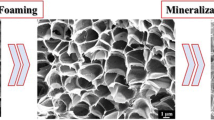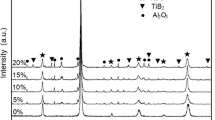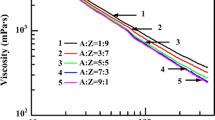Abstract
Doubly porous polymeric materials were prepared from 2-hydroxyethyl methacrylate (HEMA) through the double porogen templating approach. One such approach required the use of a macroporogenic agent, i.e., NaCl particles, and a porogenic solvent. To this purpose, sieved NaCl particles of different size ranges were used (125–200 μm, 200–250 μm, and 250–400 μm), either sintered through Spark Plasma Sintering or non-fused, in conjunction with a porogenic solvent, i.e., isopropanol. After removal of both porogens, the resulting biporous scaffolds were finely characterized in terms of porosity by scanning electron microscopy (SEM), mercury intrusion porosimetry (MIP), and nitrogen sorption porosimetry. All the obtained results indicated higher porosity ratios and specific surface areas for doubly porous materials prepared from SPS-mediated sintering of macroparticles, thus demonstrating the crucial role of macroporogen packing on the resulting porosity features. Indeed, a higher compaction of NaCl particles generated fewer interstitial voids between adjacent inorganic particles and thus afforded a higher porosity (87% porosity ratio) in the resulting porous material as compared to the corresponding analogue prepared from non-sintered NaCl particles (80% porosity ratio). A complementary 3-D imaging of the microstructure by means of laboratory X-ray computed microtomography (μCT) but also synchrotron μCT analysis qualitatively confirmed these findings. The macroporogen size was also considered to be a crucial parameter regarding the porosity features, as increasing macroporogen sizes were notably associated with increasing porosity ratios. Finally, swelling of those mono- and biporous materials was investigated. The interconnection in the higher porosity level was notably evaluated, and it was observed that the water uptake of biporous PHEMA scaffolds comprising an interconnected higher porosity level can be as high as ~ 2500%.













Similar content being viewed by others
References
Lav TX, Carbonnier B, Guerrouache M, Grande D (2010) Porous polystyrene-based monolithic materials templated by semi-interpenetrating polymer networks for capillary electrochromatography. Polymer 51(25):5890–5894
Lav TX, Grande D, Gaillet C, Guerrouache M, Carbonnier B (2012) Porous poly(styrene-co-divinylbenzene) neutral monolith: from design and characterization to reversed-phase capillary electrochromatography applications. Macromol Chem Phys 213(1):64–71
Yu C, Xu MC, Svec F, Frechet JMJ (2002) Preparation of monolithic polymers with controlled porous properties for microfluidic chip applications using photoinitiated free-radical polymerization. J Polym Sci Pol Chem 40(6):755–769
Langer R, Vacanti JP (1993) Tissue engineering. Science 260(5110):920–926
Nair LS, Laurencin CT (2007) Biodegradable polymers as biomaterials. Prog Polym Sci 32(8-9):762–798
Auriault JL, Boutin C (1992) Deformable porous-media with double porosity - quasi-statics .1. Coupling effects. Transport Porous Med 7(1):63–82
Boutin C, Royer P, Auriault JL (1998) Acoustic absorption of porous surfacing with dual porosity. Int J Solids Struct 35(34-35):4709–4737
Ly HB, Le Droumaguet B, Monchiet V, Grande D (2016) Tailoring doubly porous poly(2-hydroxyethyl methacrylate)-based materials via thermally induced phase separation. Polymer 86:138–146
Santamaria VA, Deplaine H, Mariggio D, Villanueva-Molines AR, Garcia-Aznar JM, Ribelles JLG et al (2012) Influence of the macro and micro-porous structure on the mechanical behavior of poly(L-lactic acid) scaffolds. J Non-Cryst Solids 358(23):3141–3149
Liu XH, Ma PX (2009) Phase separation, pore structure, and properties of nanofibrous gelatin scaffolds. Biomaterials 30(25):4094–4103
Yang YF, Zhao J, Zhao YH, Wen L, Yuan XY, Fan YB (2008) Formation of porous PLGA scaffolds by a combining method of thermally induced phase separation and porogen leaching. J Appl Polym Sci 109(2):1232–1241
Kovacic S, Stefanec D, Krajnc P (2007) Highly porous open-cellular monoliths from 2-hydroxyethyl methacrylate based high internal phase emulsions (HIPEs): preparation and void size tuning. Macromolecules 40(22):8056–8060
Kulygin O, Silverstein MS (2007) Porous poly(2-hydroxyethyl methacrylate) hydrogels synthesized within high internal phase emulsions. Soft Matter 3(12):1525–1529
Cameron NR (2005) High internal phase emulsion templating as a route to well-defined porous polymers. Polymer 46(5):1439–1449
Silverstein MS (2014) Emulsion-templated porous polymers: a retrospective perspective. Polymer 55(1):304–320
Ghosh S, Viana JC, Reis RL, Mano JF (2007) The double porogen approach as a new technique for the fabrication of interconnected poly(L-lactic acid) and starch based biodegradable scaffolds. J Mater Sci-Mater Med 18(2):185–193
Le Droumaguet B, Lacombe R, Ly H-B, Carbonnier B, Grande D (2014) Novel polymeric materials with double porosity: synthesis and characterization. Macromol Symp 340(1):18–27
Le Droumaguet B, Lacombe R, Ly H-B, Guerrouache M, Carbonnier B, Grande D (2014) Engineering functional doubly porous PHEMA-based materials. Polymer 55(1):373–379
Ly HB, Le Droumaguet B, Monchiet V, Grande D (2015) Facile fabrication of doubly porous polymeric materials with controlled nano- and macro-porosity. Polymer 78:13–21
Ly H-B, Le Droumaguet B, Monchiet V, Grande D (2015) Designing and modeling doubly porous polymeric materials. Eur Phys J Spec Top 224(9):1689–1706
Kim UJ, Park J, Kim HJ, Wada M, Kaplan DL (2005) Three-dimensional aqueous-derived biomaterial scaffolds from silk fibroin. Biomaterials 26(15):2775–2785
Gross KA, Rodriguez-Lorenzo LM (2004) Thermally sprayed scaffolds for tissue engineering applications. Key Eng Mater 254:961–964
Gross KA, Rodriguez-Lorenzo LM (2004) Biodegradable composite scaffolds with an interconnected spherical network for bone tissue engineering. Biomaterials 25(20):4955–4962
Audouin F, Heise A (2014) Synthesis of polymer–silica hybrid polyHIPEs by double in situ polymerization of concentrated water in oil emulsion. Polymer 55(1):403–409
Aligizaki KK (2005) Pore structure of cement-based materials: testing, interpretation and requirements. Taylor & Francis, New-York
Cartmell S, Huynh K, Lin A, Nagaraja S, Guldberg R (2004) Quantitative microcomputed tomography analysis of mineralization within three-dimensional scaffolds in vitro. J Biomed Mater Res Part A 69A(1):97–104
Darling AL, Sun W (2004) 3D microtomographic characterization of precision extruded poly-epsilon-caprolactone scaffolds. J Biomed Mater Res Part B Appl Biomater 70B(2):311–317
Lin ASP, Barrows TH, Cartmell SH, Guldberg RE (2003) Microarchitectural and mechanical characterization of oriented porous polymer scaffolds. Biomaterials 24(3):481–489
van Lenthe GH, Hagenmuller H, Bohner M, Hollister SJ, Meinel L, Muller R (2007) Nondestructive micro-computed tomography for biological imaging and quantification of scaffold-bone interaction in vivo. Biomaterials 28(15):2479–2490
Jones AC, Milthorpe B, Averdunk H, Limaye A, Senden TJ, Sakellariou A, Sheppard AP, Sok RM, Knackstedt MA, Brandwood A, Rohner D, Hutmacher DW (2004) Analysis of 3D bone ingrowth into polymer scaffolds via micro-computed tomography imaging. Biomaterials 25(20):4947–4954
Moore MJ, Jabbari E, Ritman EL, Lu LC, Currier BL, Windebank AJ, Yaszemski MJ (2004) Quantitative analysis of interconnectivity of porous biodegradable scaffolds with micro-computed tomography. J Biomed Mater Res Part A 71A(2):258–267
Bruchon JF, Pereira JM, Vandamme M, Lenoir N, Delage P, Bornert M (2013) Full 3D investigation and characterisation of capillary collapse of a loose unsaturated sand using X-ray CT. Granul Matter 15(6):783–800
Flannery BP, Deckman HW, Roberge WG, Amico KL (1987) Three-Dimensional X-ray Microtomography. Science 237(4821):1439
Kinney JH, Nichols MC (1992) X-Ray tomographic microscopy (XTM) using synchrotron radiation. Annu Rev Mater Sci 22(1):121–152
Lerouge T, Maillet B, Coutier-Murias D, Grande D, Le Droumaguet B, Pitois O et al (2020) Drying of a compressible biporous material. Phys Rev Appl 13(4)
Lerouge T, Pitois O, Grande D, Le Droumaguet B, Coussot P (2018) Synergistic actions of mixed small and large pores for capillary absorption through biporous polymeric materials. Soft Matter 14(40):8137–8146
Mabilleau G, Stancu IC, Honoré T, Legeay G, Cincu C, Baslé MF, Chappard D (2006) Effects of the length of crosslink chain on poly(2-hydroxyethyl methacrylate) (pHEMA) swelling and biomechanical properties. J Biomed Mater Res Part A 77A(1):35–42
Refojo MF (1967) Hydrophobic interaction in poly(2-hydroxyethyl methacrylate) homogeneous hydrogel. J Polym Sci Pol Chem 5(12):3103–3113
Uzun L, Say R, Denizli A (2005) Porous poly(hydroxyethyl methacrylate) based monolith as a new adsorbent for affinity chromatography. React Funct Polym 64(2):93–102
Gomes ME, Ribeiro AS, Malafaya PB, Reis RL, Cunha AM (2001) A new approach based on injection moulding to produce biodegradable starch-based polymeric scaffolds: morphology, mechanical and degradation behaviour. Biomaterials 22(9):883–889
Acknowledgments
The authors are indebted to B. Villeroy (ICMPE, CNRS) for his kind technical assistance in the SPS technique. Synchrotron µCT imaging was run on the Anatomix beamline of Synchrotron Soleil in the context of the 20171213 standard proposal. The authors wish to deeply thank the scientific staff of the beamline, Mario Scheel, Jonathan Perrin and Timm Weitkamp, for their assistance during the experiment.
Funding
This work was supported by a French government grant from ANR within the frame of the national program Investments for the Future ANR-11-LABX-022-01 (LabEx MMCD project).
Author information
Authors and Affiliations
Corresponding authors
Ethics declarations
Conflict of interest
The authors declare that they have no conflict of interest.
Additional information
Publisher’s note
Springer Nature remains neutral with regard to jurisdictional claims in published maps and institutional affiliations.
Rights and permissions
About this article
Cite this article
Mezhoud, S., Le Droumaguet, B., Aimedieu, P. et al. Investigation of morphology associated with biporous polymeric materials obtained by the double porogen templating approach. Colloid Polym Sci 299, 537–550 (2021). https://doi.org/10.1007/s00396-020-04747-9
Received:
Revised:
Accepted:
Published:
Issue Date:
DOI: https://doi.org/10.1007/s00396-020-04747-9




